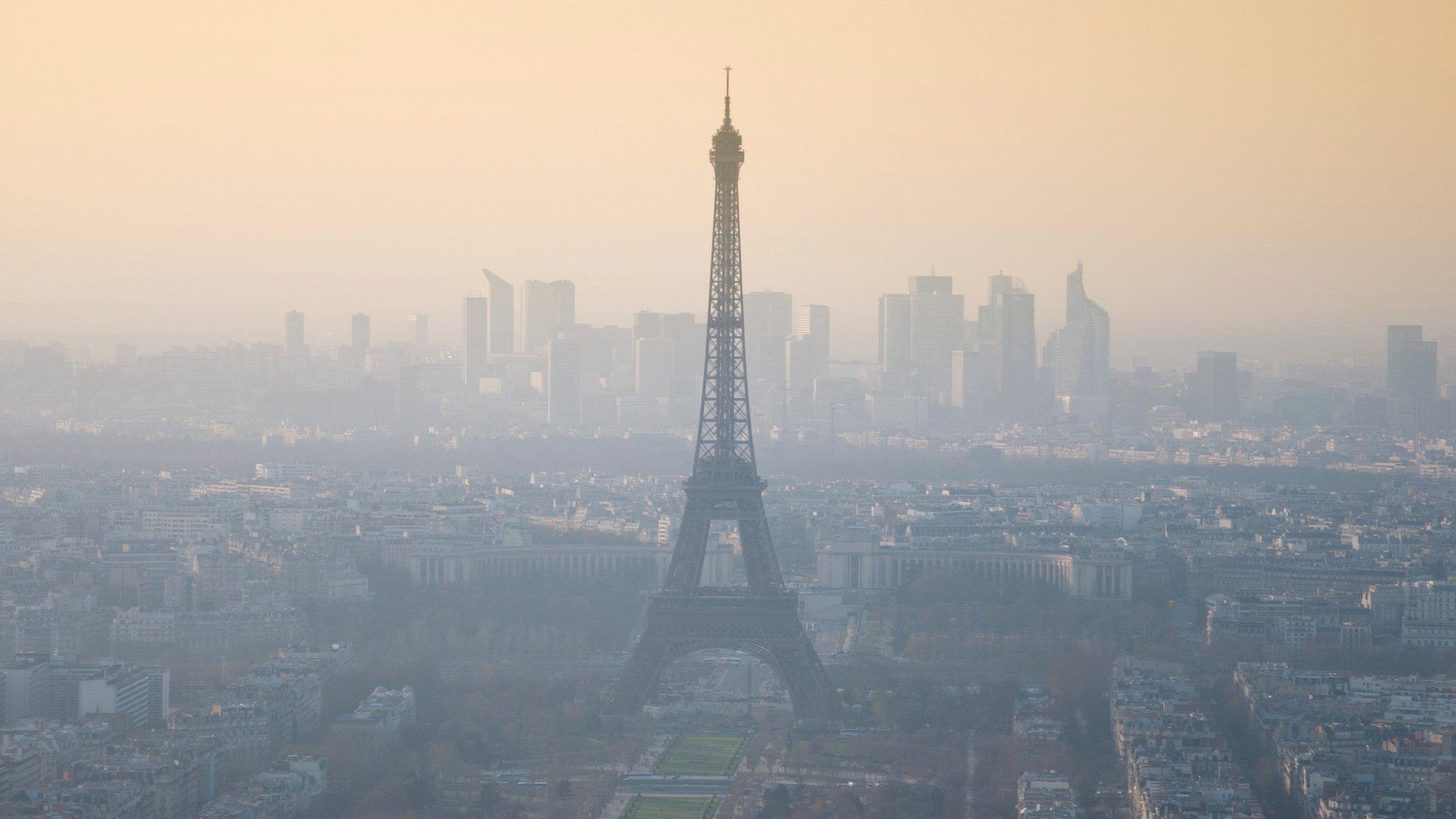Air pollution: Madrid bans old cars to reduce emissions
- Published
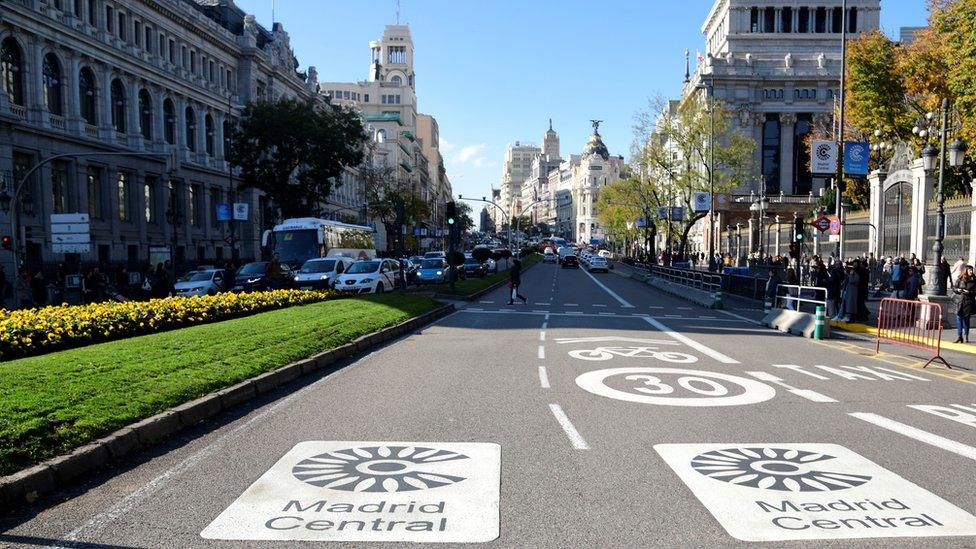
The measures in Spain's capital prioritise cyclists and pedestrians ahead of motorists
Spanish authorities have introduced new driving restrictions in the centre of the country's capital, Madrid, aimed at reducing air pollution by up to 40%.
The tough measures mean motorists will have to test their vehicles' emissions, with the oldest and most polluting vehicles banned from the city centre.
Drivers entering the controlled zone in breach of the rules will ultimately have to pay a fine of €90 (£80).
The move is also to help reduce noise and encourage more cycling in the city.
Madrid City Council estimates that the project, which was launched on Friday and labelled Madrid Central, will affect about 20% of the cars that enter the city centre.
What are Madrid's new measures?
The new rules imposed on Madrid's busy city centre form part of a plan by Spanish authorities to create a cleaner environment by prioritising cyclists, pedestrians, and the use of public transport.
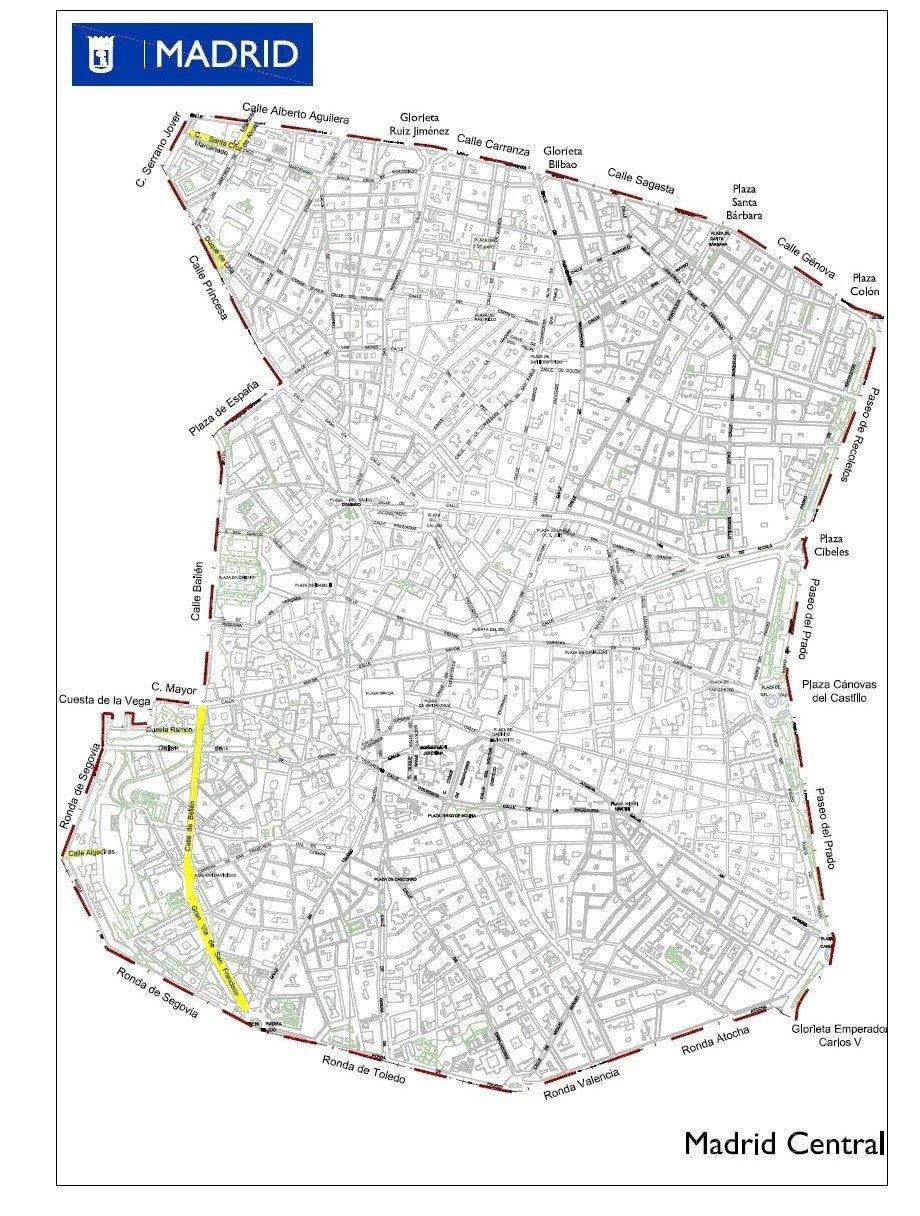

Restrictions for those entering the designated low emission zone vary depending on the type of vehicle and its "label", which is issued following emissions tests.
For example, hybrid cars with an "eco label" are permitted to drive freely in the centre and use public or designated car parks with no time restrictions.
However, diesel vehicles produced prior to 2006 and petrol vehicles prior to 2000 will not receive a label and can only enter the zone if they are registered in advance and have access to private parking.
From 2020, these vehicles will not be permitted to enter the emissions zone.
Meanwhile, residents who live within the controlled zone can drive freely at any time once registered, but can only park on their own street.
The Madrid Central area, which is marked with red lines on road surfaces and signs displaying red circles at the point of entry, is being policed with surveillance cameras.
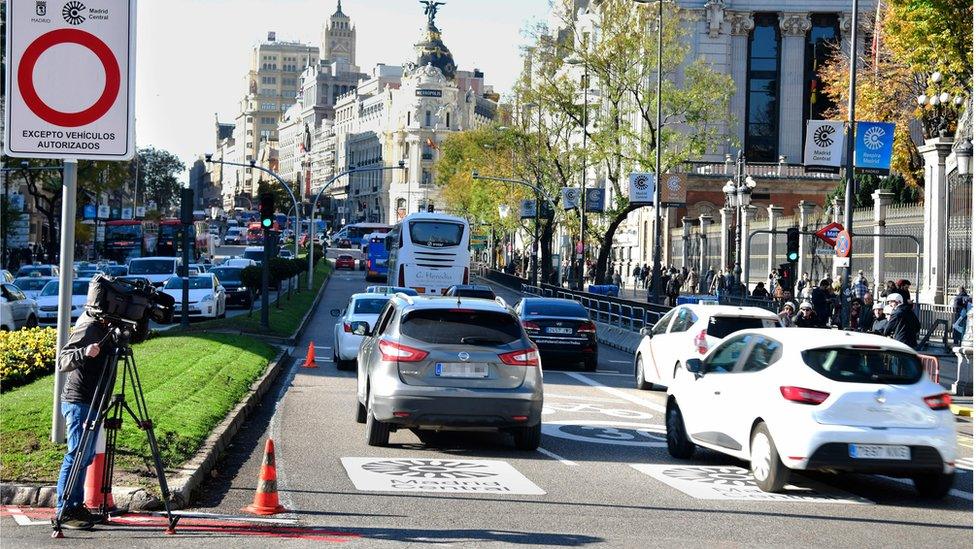
Motorists pass red road markings and a sign that reads: "Madrid Central"
How do vehicle emissions impact our health?
Concerns about the impact of exhaust pollutants emitted from older vehicles and diesel engines have risen in recent years.
The World Health Organization (WHO) has said that millions of deaths around the world every year are linked to exposure to outdoor air pollution.
Diesel engines contribute to the problem in two key ways - through the production of particulate matter (PM) and nitrogen oxides (NOx). Very fine soot PM can penetrate the lungs and can contribute to cardiovascular illness and death.
Back in 2016, the mayor of Madrid, Manuela Carmena, said the issue needed to be addressed urgently in order to improve the health of "our children, our grandparents and our neighbours".
How are other European cities tackling pollution?
Madrid is not the only capital city to focus on improving its air quality. Paris, Mexico City and Athens have all pledged to ban diesel vehicles from city centres by 2025.
Measures implemented by other cities include:
Paris
Banning cars built prior to 1997 from entering the city centre during weekdays between 08:00 and 20:00
An additional ban on all diesel vehicles registered before 2001
A strategy to phase out older vehicles and remove all diesels from the centre, while offering generous subsidies for other forms of transport
Plan to pedestrianise the city centre
Stockholm
Introduced a congestion charge for vehicles entering the centre
Set up a park-and-ride bus service to encourage drivers to leave their vehicles on the outskirts
Adopted an Urban Mobility Strategy initiative, investing in public transport systems buses, trams and the subway
London
Introduced a congestion charge for many vehicles entering the city centre
Established a 24-hour low emission zone targeting diesel vehicles throughout the Greater London area
To introduce an "ultra-low emission zone" promoting tighter exhaust emission standards in the city centre from April 2019
Set up "Cycle Superhighways" to make it safer to cycle throughout the city

More on the issues of air pollution
- Published27 June 2018
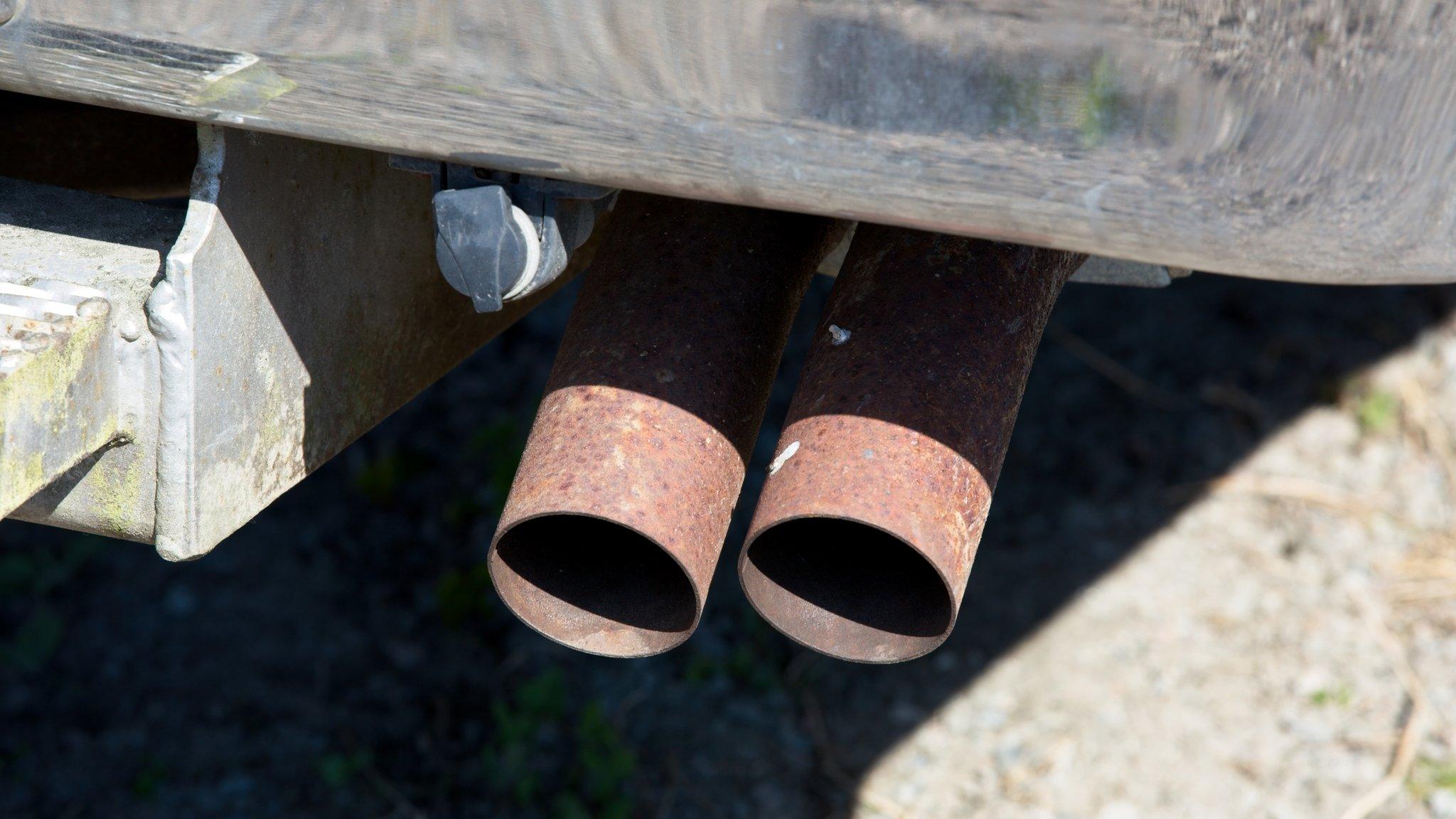
- Published29 October 2018

- Published18 October 2018
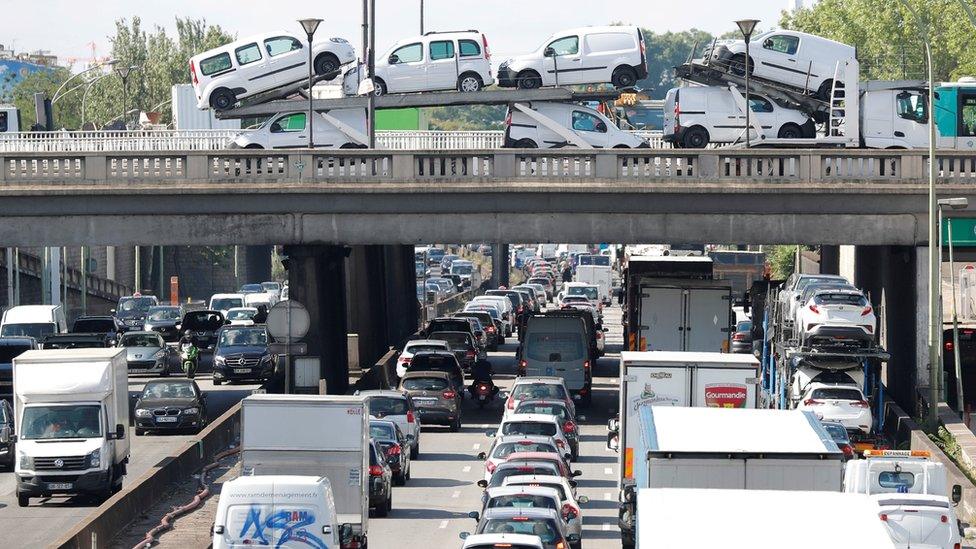
- Published27 February 2018

- Published6 March 2017
- Published30 May 2018
